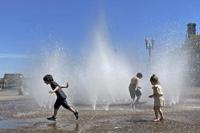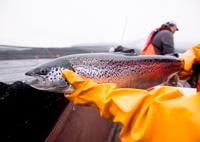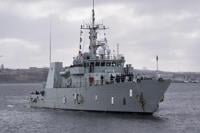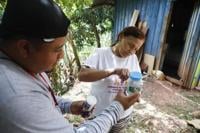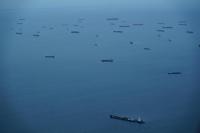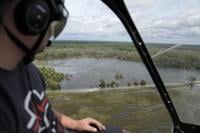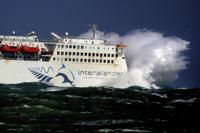For nearly two years, The Associated Press assembled puzzle pieces from across three continents to uncover the story of a mysterious Mauritanian boat — and the people it carried to death as they drifted across the Atlantic Ocean and appeared in the Caribbean island of Tobago on May 28, 2021.
Mauritania, a large country in northwest Africa, is nearly 3,000 miles (4,800 km) away from Tobago. Evidence found on the boat — and its style and color as a typical Mauritanian “pirogue”— suggested the dead were likely African migrants who were trying to reach Europe but got lost in the Atlantic.
Here are some takeaways from the AP investigation that included interviews with dozens of relatives and friends of missing migrants, officials and forensic experts, as well as police documents and DNA testing:
—43 young men from Mauritania, Mali, Senegal and possibly other West African nations, too, are believed to have boarded the boat 135 days earlier. AP has identified 33 of them by name.
—They departed the Mauritanian port city of Nouadhbibou in the middle of the night between Jan. 12 and 13, 2021.
—Clothing and DNA testing confirmed the identification of one of the 14 bodies and additional skeletal remains found in Tobago, bringing closure to one family and opening the way for other families to seek the same.
THE ATLANTIC ROUTE TO EUROPE
In 2021, at least seven boats appearing to be from Northwest Africa washed up in the Caribbean and in Brazil. All carried dead bodies.
These “ghost boats” — and likely many others that have vanished — are in part an unintended result of years of efforts and billions of dollars spent by Europe to stop crossings on the Mediterranean Sea. That crackdown, along with economic disruption from the pandemic among other factors, pushed migrants to return to the far longer, more obscure and more dangerous Atlantic route to Europe from northwest Africa via the Canaries instead.
Arrivals on the Atlantic route jumped from 2,687 in 2019 to more than 22,000 two years later, according to Spain’s Interior Ministry.
In 2021, at least 1,109 people died or disappeared trying to reach the Canaries according to the International Organization for Migration, the deadliest on record. But that’s a fraction of the real death toll. The men in the Tobago boat, for example, are not included in this number.
Other estimates are higher. Caminando Fronteras, a Spanish migrants’ rights organization, recorded more than 4,000 dead or missing on the Atlantic route in 2021, with at least 20 boats vanishing after departing from Mauritania.
CLOSURE FOR ONE FAMILY
The lack of political will and global resources to identify dead and disappeared migrants means that answers, even partial ones, are rare. Each year, thousands of families wonder about the fate of loved ones who left their homes for Europe. Few ever find out.
May Sow had been desperate for news of her nephew, Alassane Sow of Mali, ever since he had gone missing from the coast of Mauritania in January 2021. From her home in Orléans, France, she searched the internet and called people across Europe and Africa looking for him.
Alassane dreamt of joining his French relatives in Europe, hoping for a better life. But getting a visa seemed impossible. His mother had tried unsuccessfully eight times. So, like thousands of African migrants before him, he boarded a smugglers boat to the Canary Islands instead. His family never heard from him again.
After months of searching, May found an abundance of rumors and little concrete information. Increasingly, she believed her nephew, and all those traveling with him, had likely drowned. But without proof, her family remained in limbo.
She had all but given up hope of finding Alassane when an AP journalist reached out to her in November 2021. For the next 1 1/2 years, the AP traced back Alassane's steps and discovered through a cell phone found in Tobago that Alassane had boarded this boat. His aunt then recognized a piece of clothing found on one of the bodies recovered from the vessel.
But only a DNA test would confirm this was Alassane's body and allow the family to bury him.
After countless hurdles, the Sow family, with AP's help, sent a sample of saliva from Alassane's mother in West Africa to the Forensic Science Center in Trinidad and Tobago.
Finally, on Oct. 4, 2022 - 630 days after her nephew disappeared, an email arrived in May Sow’s inbox.
“I regret to inform that the DNA sample result is a positive match.”




